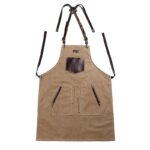In today’s fast-paced business environment, efficient warehouse management is crucial to meet customer demands and stay competitive. One of the key elements of an organized and efficient warehouse is the use of pallet racks. Pallet racks are versatile storage solutions that can significantly optimize your storage space and streamline your operations. In this article, we will explore the various aspects of pallet rack systems and how they can help improve your warehouse’s functionality.
Understanding Pallet Racks
Pallet racks are an integral part of modern warehousing and distribution centers. They are specially designed structures that allow you to store palletized goods in a systematic and space-efficient manner. These racks come in various types, each tailored to specific storage needs and space constraints. Let’s delve into some of the most common types of pallet racks:
- Selective Pallet Racks: Selective pallet racks are the most common type and are known for their accessibility. They allow you to access each pallet individually, making them ideal for businesses with a wide variety of products and fast inventory turnover.
- Drive-In and Drive-Through Racks: These racks maximize storage capacity by allowing forklifts to drive directly into the rack system. Drive-in racks are best suited for products with low turnover, while drive-through racks provide access from both sides, making them suitable for first-in, first-out (FIFO) inventory systems.
- Push-Back Racks: Push-back racks are designed to store pallets in a dense configuration while maintaining accessibility. When one pallet is removed, the next pallet automatically slides forward, optimizing space utilization.
- Pallet Flow Racks: Pallet flow racks use gravity to move pallets, ensuring FIFO inventory management. They are perfect for high-density storage and are commonly used in perishable goods storage.
- Cantilever Racks: Cantilever racks are designed for storing long and irregularly shaped items such as pipes, lumber, and furniture. They feature arms that extend from vertical columns, providing easy access to each item.
Benefits of Pallet Racks
Now that we’ve covered the types of pallet racks, let’s explore the benefits they bring to your warehouse operations:
- Optimized Space Utilization: Pallet racks are designed to make the most of your available warehouse space. By utilizing vertical storage, you can significantly increase your storage capacity without expanding your facility.
- Improved Accessibility: Pallet racks allow for efficient organization and retrieval of goods. This improves order fulfillment times and reduces the risk of errors, ultimately enhancing customer satisfaction.
- Enhanced Safety: Pallet racks are built to withstand heavy loads and are constructed with safety features like load beams, safety pins, and backstops. This ensures the safety of your employees and your valuable inventory.
- Cost-Efficiency: Investing in pallet racks can be a cost-effective solution compared to renting or building additional storage space. The return on investment is often quick due to improved efficiency and storage capacity.
- Customization: Pallet rack systems are highly customizable to fit your specific storage needs. Whether you need to store bulky items, perishable goods, or a mix of products, there is a pallet rack solution that can be tailored to your requirements.
- Inventory Control: Pallet racks enable better inventory control, as you can easily track the movement of goods. This helps in preventing overstocking or understocking, reducing carrying costs.
Considerations When Implementing Pallet Racks
While pallet racks offer numerous advantages, their successful implementation requires careful consideration of several factors:
- Warehouse Layout: Analyze your warehouse layout to determine the most suitable type and configuration of pallet racks. Consider factors like aisle width, ceiling height, and the flow of goods.
- Product Variety: If your inventory consists of a wide range of products, selective pallet racks might be the best choice. For high-density storage, consider drive-in or push-back racks.
- Weight and Load Capacity: Ensure that the pallet racks you choose can handle the weight of your products. It’s crucial to adhere to load capacity guidelines to maintain safety.
- Forklift Compatibility: Verify that your forklifts are compatible with the chosen pallet rack system. This includes assessing aisle width requirements and lift height capabilities.
- Future Expansion: Plan for future growth and expansion when designing your pallet rack system. Modular systems can be adapted to accommodate changing storage needs.
Conclusion
In conclusion, pallet racks are indispensable tools for warehouse management, offering a multitude of benefits, including efficient space utilization, improved accessibility, safety, cost-efficiency, customization, and better inventory control. When implementing pallet racks, careful consideration of your warehouse layout, product variety, load capacity, forklift compatibility, and future expansion plans is essential.
To maximize warehouse efficiency and meet the demands of today’s competitive market, investing in the right pallet rack system is a wise choice. Whether you operate a small storage facility or a large distribution center, pallet racks can help you achieve greater productivity and profitability in your operations. So, explore your options, design your pallet rack system thoughtfully, and reap the rewards of a well-organized and efficient warehouse.


